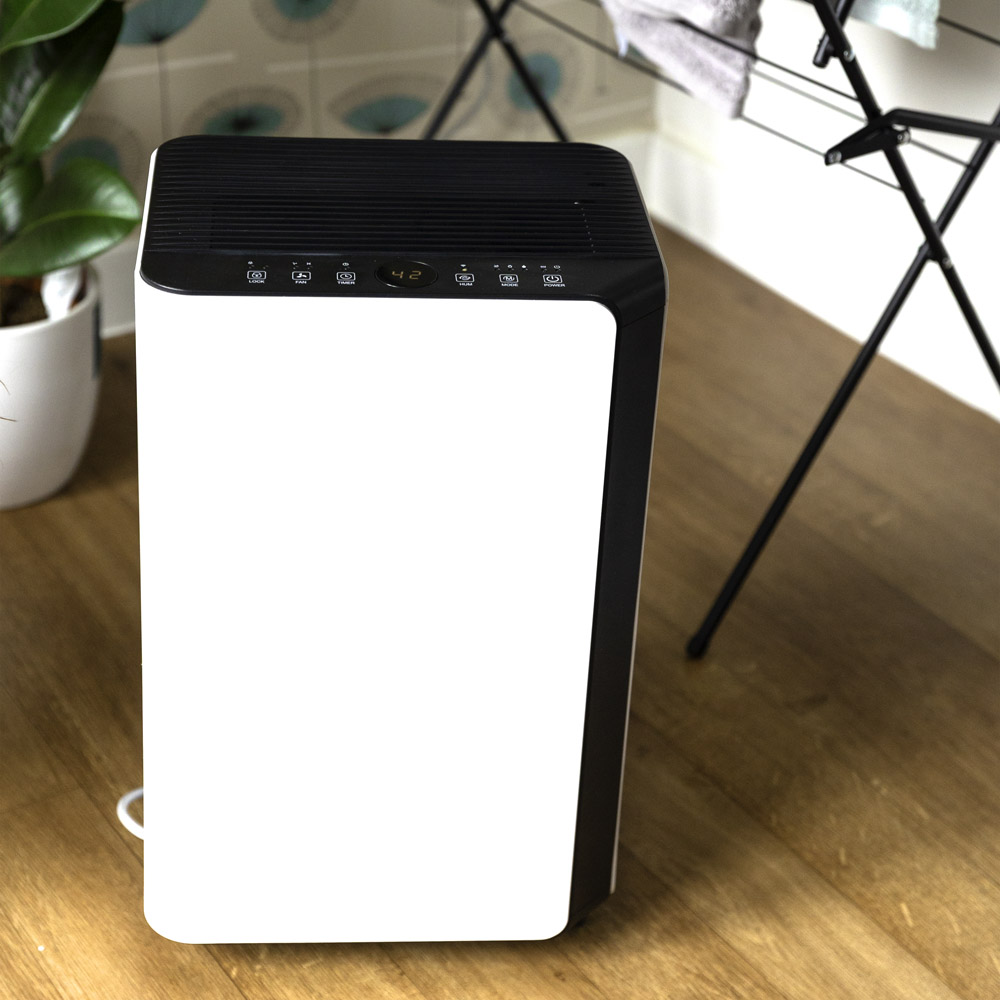All you need to know about dehumidifiers
Excess humidity is a common problem in people’s homes. Whether it’s condensation on your windows or mould growth, it’s important to keep on top of humidity to avoid further problems – which is where your dehumidifier can help! Here are our top tips on how to use yours effectively to remove moisture from your home.
 By Alex
By Alex- 30th Oct 2025
- 4min read
What causes humidity in homes?
The short answer is… you. We humans add a lot of moisture to the air in our homes daily, whether we’re speaking, coughing, cooking, cleaning or showering. Unless it has a way of escaping outside, this humidity is trapped in our homes.
Why is damp more common in winter?
Humidity happily floats about most of the time within the gases that make up the air around us. However, when it meets a surface that’s cold enough, it reverts to liquid – which is what condensation is! Ever wonder why a cold drink always gets water droplets on the outside of the glass? That’s the same thing.
Similarly, in our homes, if the air or surfaces are cold enough, damp can occur. This is why your windows are foggy on winter mornings – because they’re colder, moisture in the air is much more likely to condense on them and form water droplets.
Too much moisture can lead to damp problems and mould, so it’s well worth keeping on top of!
How does a dehumidifier work?
So, how do you prevent too much moisture from wreaking havoc in your home? You remove it from the air with a dehumidifier! Their built-in fans suck in the air and cool it down – enough for water droplets to form. It then heats the air back up, blows it out the other side, and collects all the water in a reservoir.
Where should I put my dehumidifier?
Run your dehumidifier in any rooms that are prone to high humidity. Some dehumidifiers have built-in readers which tell you the relative humidity of the air around it – anything between 30% and 60% is recommended for your home.
Pop your dehumidifier as centrally as you can, as they may not work as efficiently if they’re close to walls or windows. For windowsills, as well as smaller spaces like cupboards or wardrobes, a moisture absorber is your best friend – they cost nothing to run and can help to absorb excess moisture from specific areas.
You should also close the doors and windows; otherwise, your dehumidifier will have to work longer and harder, costing you more money to run.
Hung a load of laundry out? Your dehumidifier can help get it out of the way quicker! By removing excess moisture from the air and encouraging airflow, it’ll speed up the drying process and make sure your clothes don’t get that musty smell.
You could always speed up the process even more with a heated airer!

What else can I do to avoid damp?
Good ventilation is key to avoiding damp in your home. However, in winter, the idea of having windows open all the time isn’t very pleasant!
Instead, open windows only when you really need to, like after a hot shower or if you’re drying laundry.
Upgrading your windows to ones with trickle vents lets a small amount of air in and out throughout the day, enough to encourage airflow without making your home too chilly.
You could also try ‘house burping’, a funny name for a technique that involves opening all the windows and doors in your home for around 5 minutes (or longer when the weather is nicer). This replaces the air in your home with fresh air. Do it after your heating comes on in the morning, and the house should heat up again in no time.
You can learn more about avoiding damp in your home with our handy blog!
Any more dehumidifier tips and tricks? Let us know on socials: Facebook, Instagram, TikTok & X.